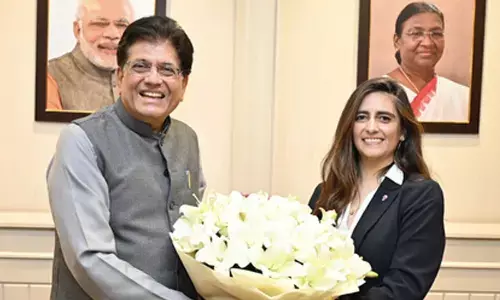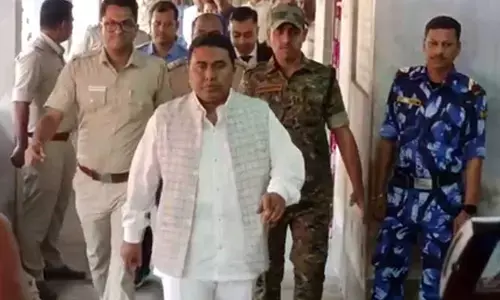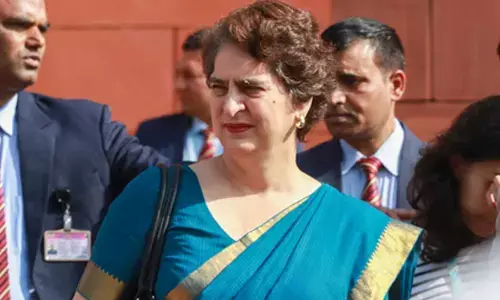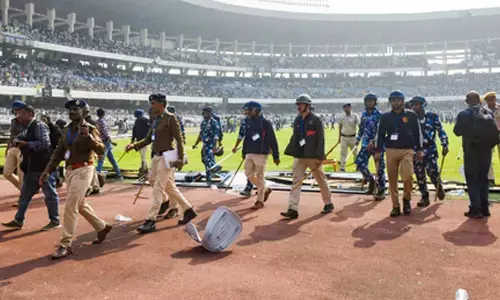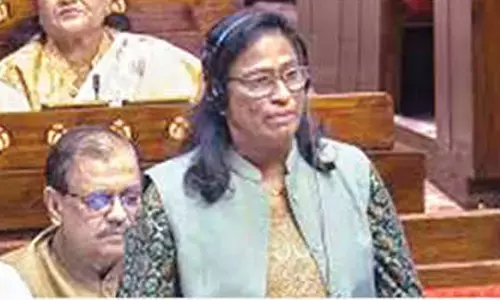BEST PATH FORWARD: A ‘HYBRID MODEL’ COMBINING SKS & TCS

Telangana Caste Survey (TCS) has sparked an intense debate in view of the discrepancies in percentage figures of Backward Classes (BC) population and inclusion of Muslim BCs within the broader BC category.
Telangana Caste Survey (TCS) has sparked an intense debate in view of the discrepancies in percentage figures of Backward Classes (BC) population and inclusion of Muslim BCs within the broader BC category.
Methodological differences and data consequently arrived at by TCS, compared to that of Samagra Kutumba Survey (SKS) done decade ago, have triggered apprehensions. SKS and TCS together – with ‘Macro-Level and Micro Level Understanding of Household Demographics’ and ‘Complex Socio-Economic Realities’ respectively – may supplement and complement each other. Careful reading between the lines is essential to grasp their ‘Abstract Implication’ for inclusive policy planning.
Both surveys may be invaluable in their own way, if interpreted holistically. SKS ensured 100% door-to-door enumeration. TCS with only 96.9% coverage, presented caste-wise breakdown. A concerted effort lacked in interpreting the ‘Alleged Data Variations’ between SKS and TCS. If studied deeply and objectively, then comprehension is easier to avoid unnecessary anxiety.
SKS, the first of its kind covering over 90 lakh families with a stated objective to collect comprehensive socio-economic data of all households, to help them avail of targeted welfare schemes, was conducted on August 19, 2014 across Telangana in a single day. The entire data entry took just 14 days. Manual and technology combination that was used for this was a role model for such citizen-centric applications including the TCS.
The first-ever caste census in Telangana, TCS, covering over 112 lakh families with a stated objective to gather caste-wise demographic data of the entire population in Telangana to provide enhanced reservation facility and social justice measures, was conducted for over 50 days through door-to-door visits by enumerators. It covered caste, sub-caste, socio-economic status, and geographical distribution. TCS’ manually recorded data was later uploaded digitally.
Comparing the similar and dissimilar aspects of SKS and TCS broadly, the former one lacking a transparency negative factor apart had a broader scope, while the latter one with a political abuse negative factor apart is considerably more focused. Both surveys, perhaps with a little bit of biased intent, impact the governance and electoral strategies influencing long-term policy decisions in Telangana.
SKS data based on 100% coverage reported that BCs constituted approximately 51% of Telangana population. TCS data based on 96.9% coverage only reported that BCs constituted 56.33% with a rider that Hindu BCs constitute 46.25% and Muslim BCs 10.08%!!
Scheduled Castes in SKS are 18% and in TCS 17.43%; SKS puts Scheduled Tribes at 10% and TCS at 10.45%. OCs in SKS are 21%, whereas in TCS it is 15.79%. These figures, especially those of SC and ST, clearly show that they are closely same. If OCs percentage could be equated in both SKS and TCS by deducting the excess percentage in SKS to add to BC percentage, the difference in BC percentage figures between SKS and TCS may be negligible. What is to be pondered is whether SKS’ BC percentage of 51% is with or without Muslim BCs and, if it is so, what is the division, and ‘If No’ what is the Muslim BC percentage and in which category it was merged. How best to comprehend?
Deceptively, the increase in BC population percentage from SKS to TCS is primarily due to the inclusion of Muslim BCs in the latter survey. SKS did not explicitly categorise Muslim BCs within the BC population, perhaps, leading to lower percentage. TCS provides more comprehensive representation by accounting for both Hindu and Muslim BCs, resulting in the increase in BC percentage. Once this dispute or discrepancy is addressed and clarified in proper perspective, and even after that, if there is an increase in BC population percentage, it certainly strengthens the case for revisiting reservation policies. Otherwise, it must be construed that both SKS and TCS supporters are defending their case without any valid reason.
Telangana Assembly unanimously adopted a resolution on February 4, 2025, urging the Centre to emulate the household caste and socioeconomic survey. CM Revanth Reddy hinted at provision of 42% reservations to BCs. However, changes in reservations’ enhancement would need to navigate the legal framework of 50% cap decided by the Supreme Court. Hence, CM said that the Congress would provide 42% quota for them in the local body elections to serve as a ‘Model.’ This shall be the ‘CONVENTION’ as a widely accepted practice even above the formally enacted law.
In retrospect, on April 16, 2017, when the Telangana BCs, SCs, and STs Reservation Bill was passed in Assembly, it was even more historic especially when Chief Minister K Chandrashekhar Rao unequivocally asserted the rights of the state in the context of reservations. Referring to SKS, KCR made it amply clear that the data was ‘Quantifiable and Impeccable’ as per the Apex Court judgement for enhancing reservation percentage beyond the 50% cap. KCR initiated process to enhance the quota of BCs overall. He proposed enhancement for Muslims BC-E category from 4% to 12%, STs from 6% to 10% and SCs from 15% to 16%.
In their own way, both KCR and Revanth Reddy with equivalent strategies, strained to tactfully enlist the support of BCs. While Revanth Reddy emphasised the ‘Historical Significance of TCS’ urging political parties to put aside differences in favor of benefits to BCs and marginalised communities, KCR had even more emphatically expressed the confidence of overcoming legal hurdles to implement the enhanced quotas which touched 62%, including that of BCs.
Intentions of KCR and Revanth Reddy may be identical, though paths subtly vary. John Quincy Adams, the 6th President of USA, said that, ‘If your actions inspire others to dream more, learn more, do more and become more, you are a Leader.’ In other words, a leader's job is to get others to go along with him in the promotion of something. Surveys and data apart, who inspired whom –at least ‘heart of hears’ – is important.
Apprehensions of BC leaders and intellectuals stem from concerns of TCS data impacting reservation policies, the reason being the inclusion of Muslim BCs in BC category.
They fear that this dilutes Hindu BCs' share in reservation benefits. Some dominant BC communities fear they might lose out if the government reallocates reservations among BC sub-groups. Nonetheless, SKS and TCS mainly differ on perceived conceptions, particularly in making a ‘Clear Distinction Between Hindu and Muslim BC Populations.’ Debates highlight the limitations of relying solely on either caste-based or religion-based survey data whereas policy decisions require a nuanced understanding of both.
Instead of fueling further division, the focus should now be on refining the data interpretation process to align with constitutional provisions, social realities, and legal boundaries, ensuring that reservations and welfare measures truly reflect the broader needs of BCs, SC and STs. An ideal, pragmatic, and inclusive approach based on well-structured ‘Hybrid Model’ that provides SKS and TCS granularity, combining the principle of ‘Greatest Amount of Good for the Greatest Number of People’ eliminating fears of bias or political manipulation, is the best alternative.
For the TCS to achieve its intended purpose, it is indispensable to address well-founded and Meaningful apprehensions of individuals from genuine and representative sections of society. Beyond political debates, by Congress, BRS and BJP, this must be ‘Recognized as Purely Socio-Economic Initiative’ aimed at ‘Empowering BCs and Marginalized Communities’ through ‘Welfare Measures and Equitable Representation.’
Hence, it requires a Government Initiative for a collective effort by intellectuals, frontline BC leaders, transcending party lines and rising above narrow political interests, to ensure a balanced and effective consensus approach. The ‘Pope Election Model’ of consensus-building offers the ‘Best Path Forward’ fostering inclusivity and alignment in shaping ‘The Hybrid Model’ that integrates diverse perspectives. As discussions progress, probably in the near future, let us look forward to the ‘White Smoke Moment,’ on finalizing ‘The Hybrid Model.’ Nevertheless, BCs, SCs, and STs ‘Come What May’ must get their Right share irrespective of SKS or TCS.








